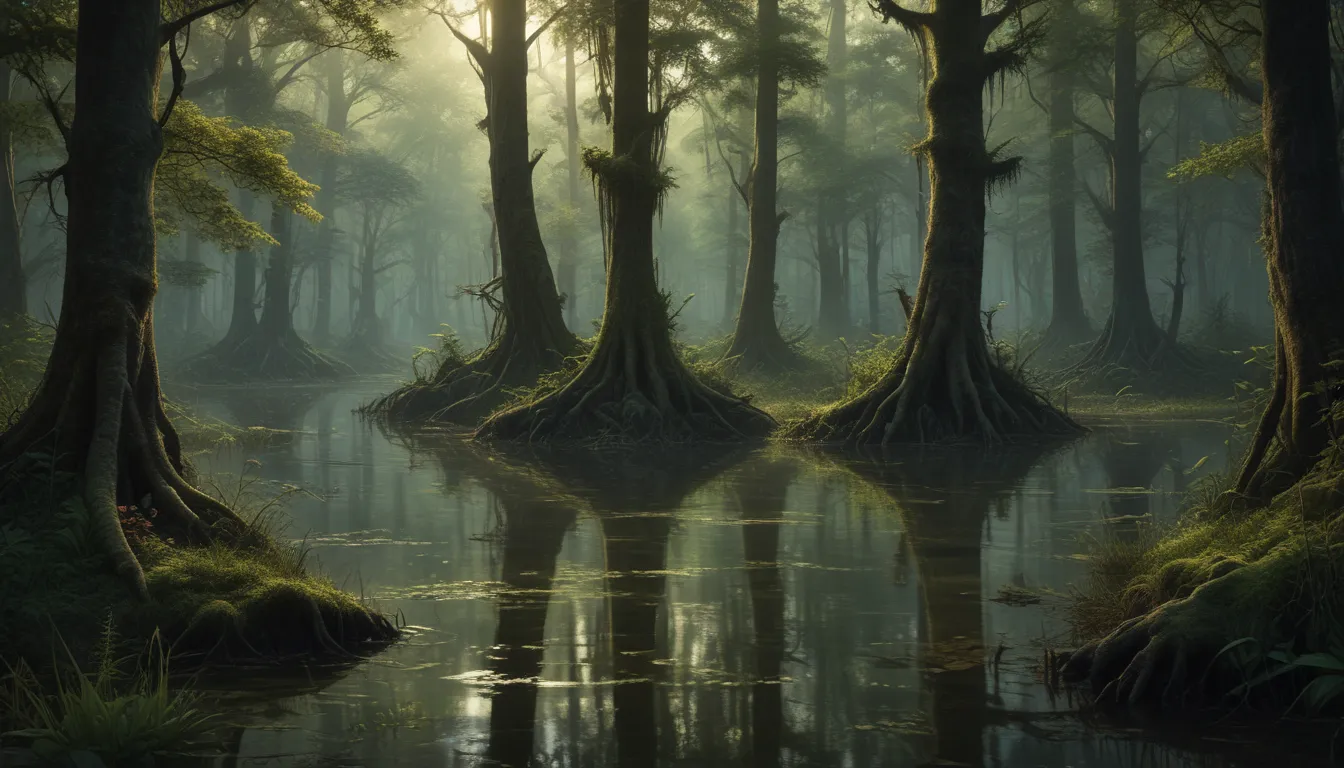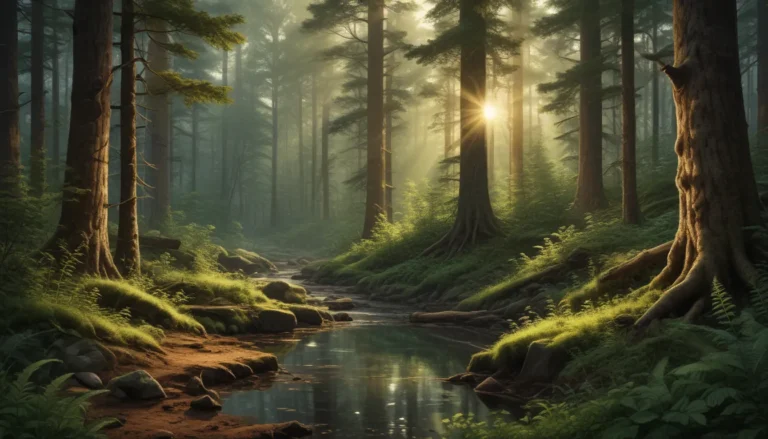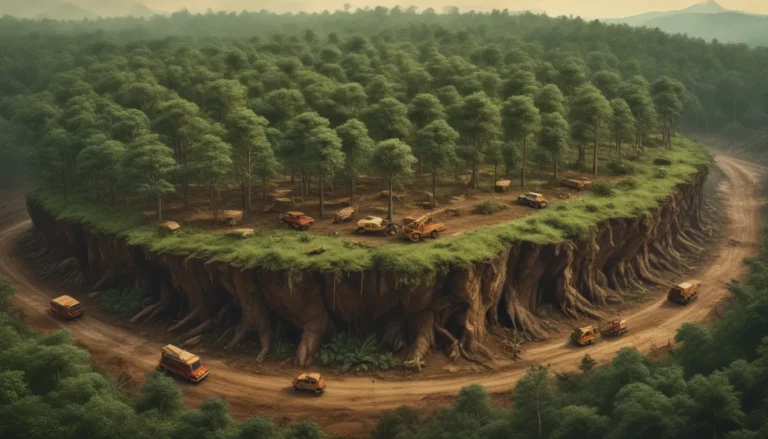A Note About Images: The images used in our articles are for illustration purposes only and may not exactly match the content. They are meant to engage readers, but the text should be relied upon for accurate information.
Welcome to the intriguing world of swamp forests, where ancient ecosystems rich in biodiversity unfold before your eyes. These wetlands, also known as swamplands, play a vital role in maintaining ecological balance, filtering water, mitigating climate change, and providing habitats for a plethora of plant and animal species. Join us as we uncover 16 fascinating facts about these enigmatic habitats and delve into the hidden wonders of swamp forests.
The Enchanting World of Swamp Forests
Swamp forests, also referred to as wetland forests, are captivating ecosystems that thrive in low-lying areas with poor drainage. These unique environments are characterized by waterlogged soil, creating the ideal conditions for the growth of diverse vegetation. From mysterious origins to the wealth of biodiversity they harbor, swamp forests offer a glimpse into a world teeming with life and wonder.
Origins in Ancient Times
The origins of swamp forests date back millions of years to a time when Earth’s climate was warmer and wetter. Over the millennia, the accumulation of organic matter like leaves and decaying plants has led to the formation of these lush landscapes. Today, these ancient ecosystems stand as testaments to the resilience of nature and the intricate processes that shape our world.
Treasures of Biodiversity
Swamp forests are biodiversity hotspots, supporting a wide array of plant and animal species. The abundance of water and nutrients in these ecosystems provides a thriving habitat for amphibians, reptiles, birds, and insects. From rare and endangered species seeking refuge to migratory birds finding respite during long journeys, swamp forests are oases of life in a world filled with wonders.
- Support for Rare and Endangered Species
- Shelter for Migratory Birds
- Thrive by Feeding Rich Biodiversity
Guardians of Water Quality
A critical role of swamp forests is their ability to purify water. The dense vegetation and intricate root systems act as natural filters, trapping sediment, nutrients, and pollutants that would otherwise harm water bodies. By enhancing water quality, swamp forests play a crucial role in preserving the health of aquatic ecosystems and human communities alike.
Climate Change Warriors
In the fight against climate change, swamp forests emerge as powerful allies. These ecosystems act as carbon sinks, absorbing and storing significant amounts of carbon dioxide from the atmosphere. By sequestering greenhouse gases, swamp forests help regulate the global climate and mitigate the impacts of climate change on our planet.
- Carbon Sequestration Efforts
- Agents of Climate Regulation
- Combatting Greenhouse Gas Emissions
Remarkable Adaptations of Trees
The trees in swamp forests have evolved fascinating adaptations to thrive in waterlogged conditions. Some species boast above-ground roots known as pneumatophores, enabling them to extract oxygen from the air. Others have developed buttress roots for stability in the soft, muddy soil, showcasing nature’s ingenuity in creating resilient ecosystems.
- Unique Tree Adaptations
- Surviving Waterlogged Conditions
Guardians of Flood Control
Swamp forests serve as natural sponges during periods of heavy rainfall, absorbing and storing excess water. This crucial function helps mitigate flooding in surrounding areas, reducing the risk of damage to communities and infrastructure. By acting as buffers against floods, swamp forests play a vital role in protecting both nature and human settlements.
Medicinal Marvels of the Forest
Many plants found in swamp forests possess medicinal properties that have been utilized for centuries by indigenous communities. These natural remedies have contributed to the development of modern medicine and continue to hold promise for future discoveries. From healing ailments to providing relief, the medicinal plants of swamp forests offer a treasure trove of potential benefits for humanity.
Emotional Symphonies of Nature
The soundscape of swamp forests is a mesmerizing symphony of nature, filled with the chorus of frogs, songbirds, and insects. The harmonious blend of these natural sounds creates a serene and calming atmosphere, making swamp forests popular destinations for nature enthusiasts, photographers, and anyone seeking solace in the embrace of nature’s melodies.
- Mesmerizing Soundscape
- Calming Natural Symphony
Guardians of Nutrient Cycling
Swamp forests boast a complex and efficient nutrient cycling system. The decomposition of organic matter in waterlogged soil releases essential nutrients that nourish surrounding vegetation, fostering lush growth and vitality in this remarkable ecosystem. By recycling nutrients effectively, swamp forests sustain the delicate balance of life within their verdant embrace.
- Efficient Nutrient Cycling
- Sustaining Ecosystem Vitality
Inspirations for Art and Literature
The mystique and beauty of swamp forests have inspired artists and writers throughout history. From captivating paintings to enchanting novels, the allure of these unique landscapes has been captured in various forms of artistic expression. The profound influence of swamp forests on human creativity is a testament to their enduring appeal and the inspiration they provide to creative minds.
Gateway to Recreation and Exploration
Swamp forests offer a wealth of recreational activities for nature enthusiasts. Whether it’s birdwatching, hiking, boating, or photography, these captivating environments provide endless opportunities for people to connect with nature and explore the wonders of these mesmerizing ecosystems. Through recreation and exploration, visitors can immerse themselves in the beauty and tranquility of swamp forests.
Ecotourism for Conservation
Swamp forests hold immense potential for ecotourism, offering opportunities for sustainable economic development while promoting conservation efforts. By showcasing the beauty and biodiversity of these ecosystems, ecotourism raises awareness and support for the protection of swamp forests worldwide. Through responsible tourism practices, we can ensure the preservation of these invaluable ecosystems for future generations.
In conclusion, swamp forests are vital ecosystems that play a crucial role in maintaining ecological balance, supporting biodiversity, purifying water, and mitigating climate change. By understanding and appreciating the hidden wonders of swamp forests, we can work together to protect and preserve these remarkable habitats for the benefit of all life on Earth. Join us in celebrating the beauty and importance of swamp forests as we embark on a journey to safeguard these precious ecosystems for generations to come.
Frequently Asked Questions
Q: What is a swamp forest?
A: A swamp forest is a type of wetland characterized by the presence of trees and vegetation adapted to water-saturated soil conditions.
Q: Where are swamp forests found?
A: Swamp forests can be found in various parts of the world, including regions with high rainfall and areas near rivers, lakes, or coastal areas.
Q: What types of plants are found in swamp forests?
A: Swamp forests often contain plants such as cypress trees, mangroves, ferns, orchids, and various aquatic plants adapted to wet environments.
Q: What animals inhabit swamp forests?
A: Swamp forests support a wide range of animals, including birds, reptiles like alligators and crocodiles, amphibians, fish, and mammals such as otters and muskrats.
Q: How do swamp forests benefit the environment?
A: Swamp forests play a critical role in flood control, water purification, and maintaining river ecosystem health. They also act as carbon sinks, aiding in climate change mitigation.
Q: Can swamp forests be damaged by human activities?
A: Yes, swamp forests are vulnerable to destruction from deforestation, drainage, pollution, and habitat fragmentation, which can have detrimental effects on both the ecosystem and its inhabitants.
Q: How can we protect swamp forests?
A: Protecting swamp forests involves implementing sustainable land-use practices, preserving natural habitats, and raising awareness about the importance of these ecosystems. Conservation efforts, such as creating protected areas and restoring degraded wetlands, are crucial for their preservation.
We hope this exploration of the mysteries and marvels of swamp forests has inspired you to appreciate and protect these invaluable ecosystems. Together, let’s cherish the beauty and diversity of swamp forests and ensure they continue to thrive for the benefit of generations to come.






